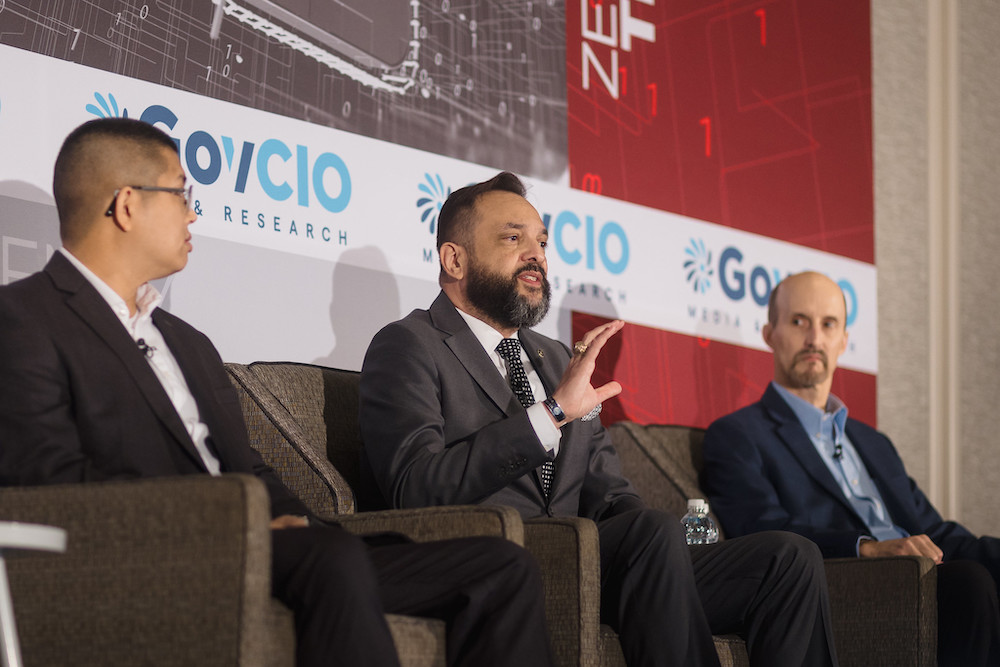DOD Takes Step in Capturing Actionable Data from Wearables
A new effort is taking extracted data from IOT devices to a build a health data ecosystem for the military.

PARTNER CONTENT
A Defense Department data-sharing effort that arose during the COVID-19 pandemic for contact tracing is making meaningful use of “internet of things” data for military health care.
The Defense Healthcare Management Systems effort — the Joint Deployable Personal Proximity Solution (JDPPS) — leverages an IOT data hub from Software AG Government Solutions called Cumulocity. It was used first to help the department track the health of COVID patients whose symptoms and longer-term complications were still in the process of being fully understood.
“The JDPPS solution arose out of what’s called a Joint Emergent Operational Need (JEON) for the Joint Chiefs of Staff,” SoftwareAG Government Solutions Strategic Account Executive Kirk Skeeles told GovCIO Media & Research. “It was a proximity-logging solution in the height of the pandemic, and with that they wanted to develop a solution for them to use across DOD that could minimize the heavy burden of interview-based contact tracing.”
Under the project, Software AG Government Solutions has been gathering data from military personnel wearables and offloading that information onto an anchor. That information is then sent to the Cumulocity platform where it is processed and sent to its destination, where it could then be further used in the department, such as in electronic health records, for example.
The company recently obtained an authorization to operate with conditions (ATO-C) for Cumulocity, and it expects to receive a full ATO this fall.
The platform provides self-service tools and a configuration-driven approach to support further innovation around wearable data, enhance customer experience and streamline operations across enterprises.
“[DHMS] liked what they saw with Cumulocity … to be able to handle multiple types of devices and to be able to provide a solution not just for the instant need that they had, but for many solutions to build upon. The idea was to create a secure edge platform that could be added upon going forward,” Skeeles said.
IOT devices have proliferated in both the private and public health sectors to aid in remote patient monitoring and collect meaningful health data for long-term health care. Devices like heart monitors and pacemakers, for example, collect and send patient health statistics over various networks to health care providers for monitoring, analysis and remote configuration.
But managing an IOT ecosystem requires a secure approach to managing data at the edge and efficient processes for developing further applications to process and analyze that data.
With Cumulocity and its ATO-C, the department has the capability to expand its data ecosystem to manage more wearables, sensors and medical devices in other applications where IOT and wearable data is being used.
Cumulocity provides a framework for management and control of devices, sensors or data sources and serves as the “central hub” that houses data and devices so organizations do not have to go through additional certifications.
“In the government, cyber is at the forefront,” Skeeles said. “Cumulocity … already has that authority to operate within the network. … In doing that, that shortens the cycle to be able to speed innovation. Then, all you need to do is that last mile from the device to Cumulocity, and then everything else has already been taken care of through the security process.”
Cumulocity has the option to run on the cloud or at the edge, which creates a much more flexible solution.
“There’s a lot of information that can be captured at the edge, but in order to send all that back to a central processing location, such as a cloud infrastructure or even a data center, the amount of bandwidth that chews up and the time that it takes to do that can be prohibitive,” Skeeles said.
Moving forward, Software AG Government Solutions sees Cumulocity as a bridge to help agencies deliver better and more secure data solutions at scale.
“I do think it can be a good springboard for innovation for government to build upon what we’ve done. The speed at which all of this took place was all within about a year,” Skeeles said. “That was because of the partnership … [with] the government. They provided excellent support in helping us break down barriers and get through the hurdles.”
This is a carousel with manually rotating slides. Use Next and Previous buttons to navigate or jump to a slide with the slide dots
-

Sea-Air-Space: Voice Transformation Strategies for the Navy and Marine Corps
Military services can use more flexible systems to integrate communications across organizations.
4m watch -

CISA, DOD Tackle Next Steps in Zero-Trust Implementation
Federal leaders discuss future strategies and culture impacts around successful zero trust implementation amid new organizational structures.
3m read -

'Balance' Needed in Hybrid Cloud Security, Interoperability
Federal officials from CISA and SOCOM say hybrid cloud cybersecurity needs a holistic approach to be successful.
4m read -

Advice for Defense IT to Balance Speed, Security in the Digital Age
D.R. Carlson, Senior Director, Segment Marketing for the Americas, Equinix
9m listen




